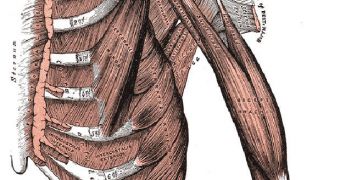A collaboration of researchers, featuring members from Canada and the United States, announces the development of an innovative type of artificial protein. The new molecule is capable of mimicking, or replicating, the mechanical and elastic properties found in titin, a natural protein inside muscle tissue. The group also says that their construct can be introduced inside biomaterials, where it acts just like a natural muscle. The two main characteristics that researchers were aiming for was obtaining toughness and the ability to stretch, and both objectives were successfully achieved.
Biomedical applications for artificial muscles (synthetic elastomers) number in the hundreds, and so developing this class of medical devices has been a long-standing goal in the fields of biotechnology and bioengineering. The innovation was achieved by a group of specialists based at the University of British Columbia in Vancouver, Canada, and colleagues from the Virginia Polytechnic Institute and State University, in the United States, Chemistry World reports. However, using such artificial structures in the human body is not without challenges and dangers.
For example, placing foreign structures inside a human will often result in that person's immune system attacking and rejecting the implant. Additionally, the new muscles do not aid surrounding tissues in their recovery process, which increases healing times, and raises the risk of dangerous complications. Because the team used artificial proteins for the job, the risk of rejection is reduced. Experts hope that this will pave the way for artificial muscles to be used in replacing badly-damaged, natural muscles. New and advanced prosthetic devices could also become possible.
“Due to its unique mechanical and functional properties, this biomaterial may find potential applications in tissue engineering,” explains Hongbin Li, who was the leader of the collaboration. The scientist is based at the UBC. The newly-obtained biomaterials are “highly resilient but also displays force damping properties when subject to high extensions. The principles established in this study provide an opportunity to expand the toolbox of molecular building blocks for fabricating new materials and devices for significant utility in medicine,” says Emory University School of Medicine artificial muscle design expert Elliot Chaikof.

 14 DAY TRIAL //
14 DAY TRIAL //